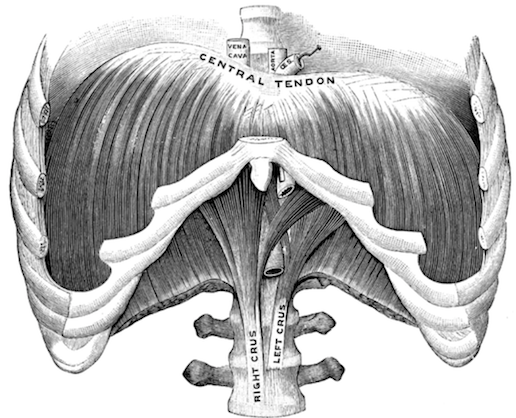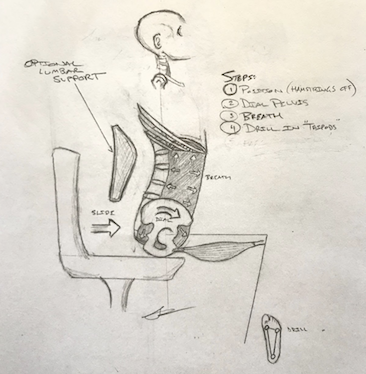Product Summary
The first step in rehabbing an oblique strain is rebuilding the other sections of the abdominal region that support and encourage the repair of the strained location.
Running, turning, and twisting again with confidence is possible with the correct program.
The magic is working around the irritation in a STRATEGIC, NON-PAINFUL way.
Weeks of bedrest and avoidance of activity are ill advised in most cases of oblique strains. Allow me to walk you through the process I used when I experienced an oblique strain, one of the worst injuries I’ve ever had.
It was painful. But restoration of proper breathing is attainable.
What’s included in this online program?
– All of the information you need to rehab sports hernias in place
– Effective, easy to follow, corrective exercise videos
– Exercises targeting the “deep core” and hips
– Postural & lifestyle suggestions to reduce relapse potential
– Reference of research
FEELING BETTER IS JUST A FEW WEEKS AWAY!
What is an Oblique Strain?
An oblique strain, AKA a side strain injury, is when one of the abdominal muscles (internal or external oblique muscles) becomes frayed, torn or detached. Often times from the lower four ribs, it is painful to breath, cough and laugh. This is treatable, with recovery ranging from weeks to months with the correct treatment plan.
The Basis of this Guide
Not only have I (Sebastian Gonzales) personally had an oblique strain injury – the worst injury of my life – but I navigated through that injury successfully and created this 8 week program based on the things that I did with the help of a coach (doc).
To understand what you can expect from this guide, watch this introductory video that we include in the paid guide. It helps break down the various components of your torso and WHY people get oblique strains. Once you watch this highly informative video, you’ll know if this 8 week oblique strain guide is right for you.
Framing the Logic to Rehab
I like to start with framing why I program what I do because most people will default to braces, massage, medication, and excessive rest with oblique strains, which is not wrong but only about a quarter of the full rehab picture.
Although you can’t find this on the internet unless you dig deep, my theory of an oblique strain is based on a few central concepts:
- The transversalis fascia became strained because it was working too hard.
- Fascia and muscles that work too hard do so because they have a poor “supporting cast”.
- Complete stabilization of the torso comes from internal pressure (created by breathing) and co-contraction of the abdominal wall.
- Complete/Total torso stabilization will fail unless the hips are mobile.
The concept of proper breathing has floated around the athletic professional world since 2015 despite having been observed and theorized many years prior. Most athletes who’ve developed an abdominal injury have probably had a conversation about “core strength” with their rehab professional at some point (if they’ve kept up with their research, anyways).
Proper breathing and the resulting intra-abdominal pressure is the FOUNDATION for a healthy core during any athletic movement. By the way, core strength has nothing to do with injury prevention! That’s more dependent on ENDURANCE, ie: the ability to hold the optimal posture for the duration of the movement.
Breathing is important not only for oxygen intake but also for stabilization of the torso and pelvis when performing an athletic motion. This protects the obliques from becoming overworked and strained. Hear me out:
The diaphragm (the parachute-like muscles inside your torso) has two functions:
- Primary Function: bringing in oxygen
- Secondary Function: stabilization of the torso

This parachute flattens downward creating negative pressure in the thoracic (chest) cavity. This negative pressure creates a vacuum that sucks in the air you need to survive.
Secondarily, the flattening effect compresses on the water and organ-filled cavity beneath it, which helps stiffen your belly/back region via an outward-pushing pressure. This pressure is maintained via the entire abdominal wall (front, back, and sides) as well as the pelvic floor.
Stiffening of this region is what allows you to transfer power and force from the ground to your body. Without it, you’d look like Gumby running: sloppy, not very powerful and asking a whole heck of a lot from your obliques to do the work of the entire internal pressure system.
Here’s a picture of the internal pressure system working when seated. Remember, it should always be working:

8 Week Program
These 8 weeks of rehab are pretty simple programming, but they’re what I have found to work in my clients. Less is more when an injury is fresh. I usually step in about 10 days after the injury to ensure we have allowed the tissue to “put some glue” on anything that is at least a grade 1 tear…which is what most sports hernia are.
Because a sports hernia traumatizes the body’s primary stabilization center, the torso, we need to rebuild foundational motor patterns (engrams) to make sure that as we build into weights and speed again we don’t have a sports car sitting on top of a rotting frame.
IMPORTANT INSTRUCTIONS
I have my patients do 10-15 minutes of the weekly circuit per day within an hour of waking. I find this works best because it allows the remainder of the day to be full of better movements and produces less discomfort.
Allow for zero distractions when building new motor engrams. They take perfect reps and mindful motion. Kick the dog and kids out of the room and get some personal time. I ask my patients not to count reps because it’s distracting from the mindful motion. Instead, I’ll have them use a repeating countdown timer for 1-minute and 15-second break/transition times.
All exercises that have a hold time in the program are only 10 second holds followed by a 10-second break. There should be ZERO PAIN or DISCOMFORT at the location of injury during the exercises.
All exercise stations are for 1-minute, unless it’s a single-side effort. In that case, spend a minute per side. I have people do the exercises in week 1 daily throughout rehab, and everything that is added on top of the foundational three are performed 3 days a week.
Reviews
Only logged in customers who have purchased this product may leave a review.

I’ve played competitive tennis my whole life, and for the first time ever I have been suffering from a strained muscle on the front/ oblique muscle region for almost 6 months. It started while I returned a ball during a game. I felt a stabbing sensation and I have not been able to shake it sense. I have been able to do most everything throughout my day without feeling more than a pulling in the region. I rested it for 3 weeks and felt pretty good until I attempted to play tennis again. I’ve given it rest for 3-4 week about 2 times and decided to ask my doctor for some help. He said it was a strained oblique muscle and that I should rest it longer. He suggested 6 weeks. During the 6 weeks, I tried some stretching and exercises on Youtube which seemed to target the area but when I returned to tennis again, it was back. Whatever I was doing, whatever I had been told about resting it – just wasn’t working.
I finally found a video Sebastian posted on Youtube which was just different from everything else I’ve seen, so I decided to try his 8 week program. The fact that he himself went through, as he says, the most painful injury of his life – an oblique strain – made me feel good about giving this program a shot. It’s unfortunate the doctors recommendations weren’t working to the point that I’m doing DIY at home rehab programs, but I get why this program works, and I’m so glad I found it.
It started off slower than I thought it would with some breathing and bracing exercises. The idea was to improve the ability of the core to keep better composure to take unnecessary strain away from the problematic muscle. Long story short, I followed the program and after 6 weeks I could not be more happy. I am playing again and using the exercises as a warm up before playing. I can’t believe I spent so much time “resting” it and no time rebuilding the structures around the oblique.
Thanks for making the program!! If you are on the fence, give this a shot. Put the work in.